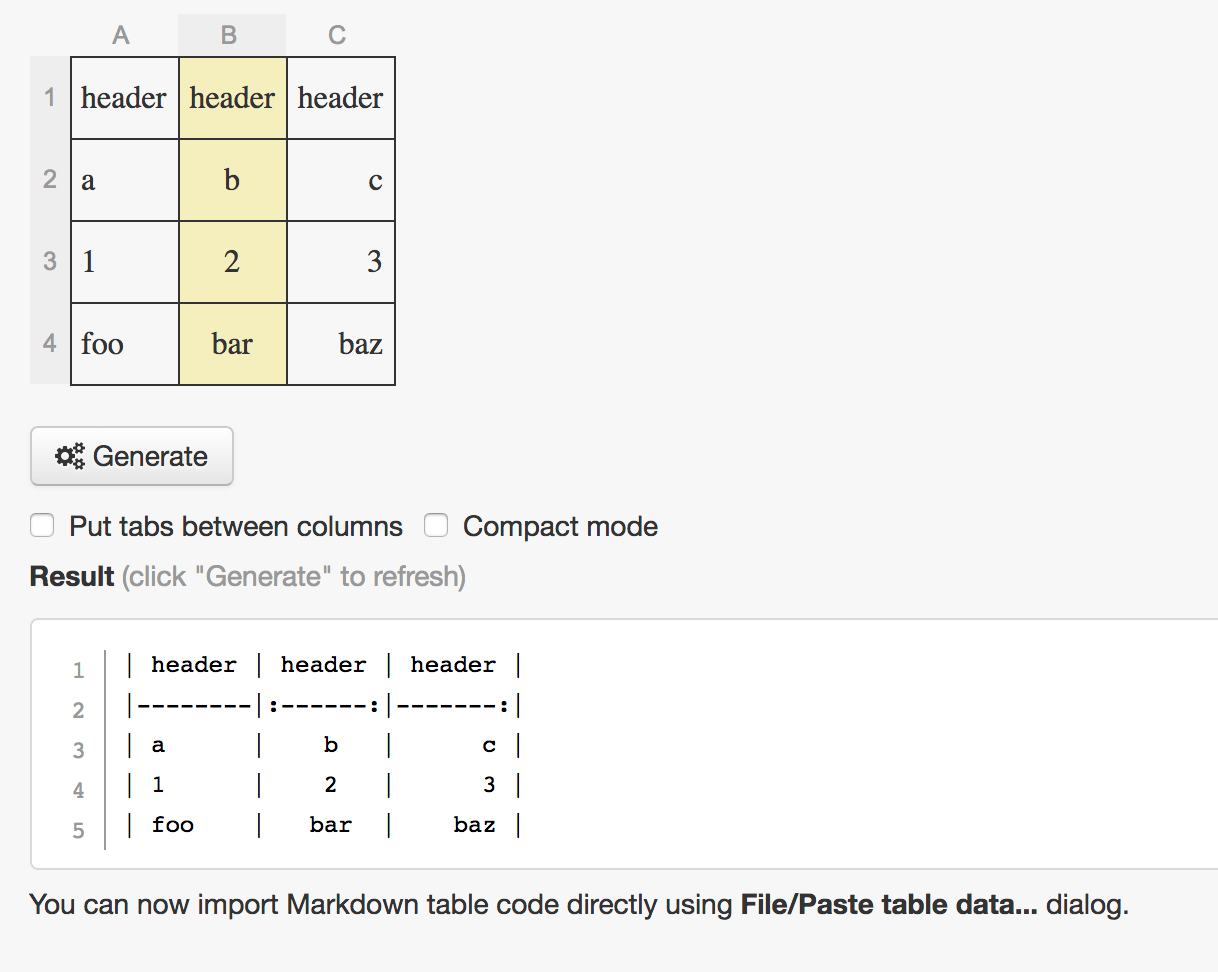

To add a table, use three or more hyphens ( -) to create each column’s header, and use pipes ( |) to separate each column. Check your processor’s documentation for more information. Many of them allow you to add extensions that enable extended syntax elements. There are dozens of Markdown processors available. Many of the most popular Markdown applications use one of the following lightweight markup languages:
#TABLE MARKDOWN CODE#
They include basic syntax and build upon it by adding additional elements like tables, code blocks, syntax highlighting, URL auto-linking, and footnotes. Aligning text within a table element is currently not supported.

There are several lightweight markup languages that are supersets of Markdown. Place each table row on its own line Separate table cells using the pipe character The first two lines of a table set the column headers and the alignment of elements in the table Make sure to end each row with a CR or LF. If it doesn’t, it may still be possible to enable extensions in your Markdown processor. You’ll need to check whether or not the lightweight markup language your application is using supports the extended syntax elements you want to use. Not all Markdown applications support extended syntax elements. These elements can be enabled by using a lightweight markup language that builds upon the basic Markdown syntax, or by adding an extension to a compatible Markdown processor. Several individuals and organizations took it upon themselves to extend the basic syntax by adding additional elements like tables, code blocks, syntax highlighting, URL auto-linking, and footnotes. It is probably not worth it.The basic syntax outlined in the original Markdown design document added many of the elements needed on a day-to-day basis, but it wasn’t enough for some people. | Version V2 | Z-value 06 Protocol 04 05 Protocol Sub 02 Application 11 Application Sub 00 | The table columns do not have to align in the un-rendered text, but. |Dashes |`- is en-dash, - is em-dash`|- is en-dash, - is em-dash|įinally, your example would be something like: | | Returned Value | Markdown tables are written (drawn) using the characters pipe, dash - and colon. |Quotes |`"Isn't this fun?"` | ASCII HTML Single backticks 'Isn't this fun?' ‘Isn’t this fun?’ Quotes "Isn't this fun?" “Isn’t this fun?” Dashes - is en-dash, - is em-dash – is en-dash, - is em-dash |

|Single backticks|`'Isn't this fun?'` |'Isn't this fun?' | We generally start with a cell, multiple columns in a row, and further multiple rows, which. The line breaks in Markdown are used to create a cell in a table.
#TABLE MARKDOWN SOFTWARE#
The other drawback is that the result can be unreadable, for example: | |ASCII |HTML | The tables in markdown are similar to the tables created in the Microsoft word, which is the processing software to write the text in different styles, colors, and other formatting styles. To use it, open a Rmd or R document and select Addins > Insert Table. This requires some work because you need to examine the generated HTML of a rendered (fortunately browsers like Firefox let you examine the source of a rendered HTML). Upon installing, inserttable registers a new RStudio Addin (Insert Table) that can be used to easily insert a table in a Rmd document. Is right, you can paste HTML (of a table generated with Markdown for example) inside a cell of Markdown table.


 0 kommentar(er)
0 kommentar(er)
